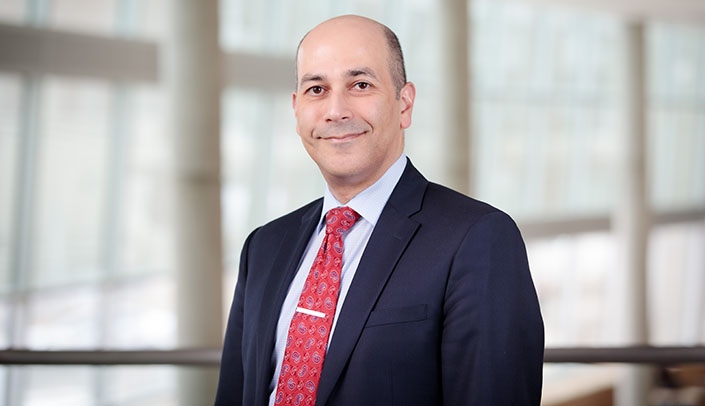A 2020 health care workforce report issued by UNMC reveals that the number of physicians and nurse practitioners increased slightly in the state of Nebraska since the last survey in 2018. Despite these positive developments, rural areas of the state still lag in the number of needed health care professionals.
“The delivery of comprehensive, high-quality, team-based care is getting more difficult in rural communities that have limited or no access to the key health care specialists and nursing professionals needed to case-manage and care for increasingly complex patients,” said Nicole Carritt, director of the UNMC Office of Rural Health Initiatives.
This and other key findings of the study appear in the 62-page report, “The Status of the Nebraska Healthcare Workforce: Update 2020.”
“Health care professions are high demand, high skill, and high wage (H3) occupations,” said Jeffrey P. Gold, MD, chancellor of UNMC and the University of Nebraska at Omaha. “These professions are critical to the overarching health care system as they facilitate access to quality healthcare and have a significant impact on Nebraska’s health, economy and the sustainability and vibrancy of the state’s rural communities.”
The study, commissioned and funded by the Office of Rural Health Initiatives and the Nebraska Area Health Education Center Program (AHEC), used the most recent data from the UNMC Health Professions Tracking Service and the state of Nebraska.
“This report helps to measure the progress we have made in the state in dealing with some of the workforce issues in rural Nebraska and in planning for the future,” said Nizar Wehbi, MD, assistant professor and deputy director for the UNMC Center for Health Policy.
Several programs have helped increase the number of rural health professionals.
“‘Grow Your Own’ programs encourage, incentivize and support students from rural and disadvantaged backgrounds who enroll in pre-health and health profession training programs and are committed to returning to rural areas to practice,” Carritt said. “More than 71 percent of graduates from the UNMC’s Rural Health Opportunities Program (RHOP), Kearney Health Opportunities Program (KHOP) are practicing in rural Nebraska.”
Still, challenges include:
- The reality that nearly one-fourth of the physicians in Nebraska are more than 60 years old, and thus likely to retire in the near future;
- 17 of 93 Nebraska counties have no pharmacist;
- 14 of 93 Nebraska counties have no practicing primary care physician (although many of those counties have populations under 1,000 and are unlikely to be able to support a full-time physician); and
- Demographics in many counties are becoming more diverse, but the current health workforce doesn’t necessarily reflect the populations being served.
“In partnership with stakeholders across UNMC’s 500-mile campus, we’ve made progress over the years. But the landscape of health care is rapidly changing, and we must remain diligent to sustain the progress we’ve made and close the gaps,” Carritt said. “The time is right for new and innovative community-based ideas and policy solutions that incentivize healthcare providers to practice in high-need areas and attract private investment to strengthen the healthcare infrastructure in rural Nebraska.”
Other key findings of the report include:
- Out of 93 counties, only 39 have active OB/GYN physicians in 2019 compared to 49 in 2017.
- There are 1,335 nurse practitioners (NP) in Nebraska – a 16.3% increase since 2017 when there were 1,148 NPs.
- The number and rates of all types of emergency medical technicians have declined significantly from 6,961 to 6,633, a 4.7% decrease in two years.
- The number of registered nurses increased by 1,137 between 2017 and 2019.
- The number of practicing pharmacists decreased slightly between 2017 and 2019 while the number of pharmacy technicians increased by 83.
- There are substantial gaps in the distribution of allied health professionals across Nebraska, particularly in north central Nebraska.
Based on the findings, the report issued the following recommendations:
- Enhance existing pipeline programs and educational initiatives that incentivize health care professionals to practice in rural communities;
- Enhance the availability of scholarships and student loan repayment programs for health profession students and practitioners at all levels, especially those interested in working in rural and underserved urban areas to assist students with unmet financial needs and encourage students to remain in the state after completion of their training programs;
- Increase the number of medical residency training positions in Nebraska to include significant training in rural and underserved areas;
- Expand the capacity of the telecommunication infrastructure to support the adoption and utilization of telehealth for expanding access to healthcare;
- Develop innovative healthcare delivery solutions and related policy interventions to mitigate gaps in healthcare access due to health profession shortages as well as support rural training programs like Simulation in Motion – Nebraska (SIM-NE);
- Perform targeted, ongoing data collection to monitor the healthcare workforce and forecast future needs and requirements; and
- Establish and streamline existing public-private partnerships aimed at health professions education, workforce development and healthcare delivery.
The report examined 21 health care professions ranging from physicians and physician assistants to nursing, dental and allied health professionals.
It also looked at the sex, age, race and ethnicity of each health care professional, as well as measured the number and rate of health care professionals per 100,000 people by county.
